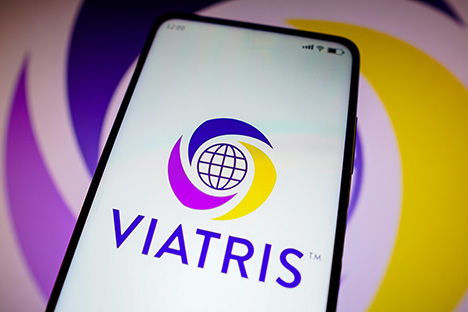Viatris (Nasdaq: VTRS) sounds like a drug for men that you may see advertised during a football game or on Antiques Roadshow, but it’s a company that does make pharmaceuticals for a variety of medical specialties, including oncology, respiration and women’s healthcare, among others.
Viatris pays a $0.12 per share quarterly dividend, which comes out to a 5.1% yield. Let’s see if it’s sustainable.
Last year, Viatris’ free cash flow was lower than it was in 2021 – but barely.
In 2021, free cash flow totaled $2.556 billion. Last year, that figure came in at $2.546 billion, which means cash flow declined by 0.4%. So it’s a rounding error, really.
However, Safety Net errs on the side of being conservative. If free cash flow falls by as much as $1, Safety Net’s spidey senses start tingling and it lowers the stock’s dividend safety grade.
The company was created by a merger of Mylan and Upjohn. The combined company has been paying a dividend since 2021. It raised it in 2022. But because the dividend-paying history is so short, the Safety Net algorithm doesn’t trust the company yet.
It’s like even if the guy your daughter is dating brings her home by 11 on the first date, it doesn’t mean a whole lot. It’s going to take a while for this punk to earn your trust.
As far as Safety Net is concerned, Viatris is that young punk.
The good news is Viatris did bring your daughter home on time and was very polite with a respectable 23% payout ratio (forecast to dip to 21%). That means the company paid out only 23% of its free cash flow in dividends.
And while free cash flow dipped ever so slightly, this year it is projected to grow to its highest level since the two companies first hooked up.

Should the company’s 2023 free cash flow exceed last year’s total, the dividend safety will be upgraded.
But it will take a few more years of consistent dividend payments before Safety Net is ready to welcome Viatris into the family of “A”-rated stocks.
Viatris doesn’t appear to be in any imminent danger of cutting the dividend. The lower dividend safety rating is due to the lack of track record and the minor decline in free cash flow last year.
I am not especially worried and expect an upgrade in 2023.
Dividend Safety Rating: C

If you have a stock whose dividend safety rating you’d like me to look at, leave the ticker symbol in the comments section.
Also, be sure to search the Wealthy Retirement website to see whether I’ve written about your favorite stock recently.
